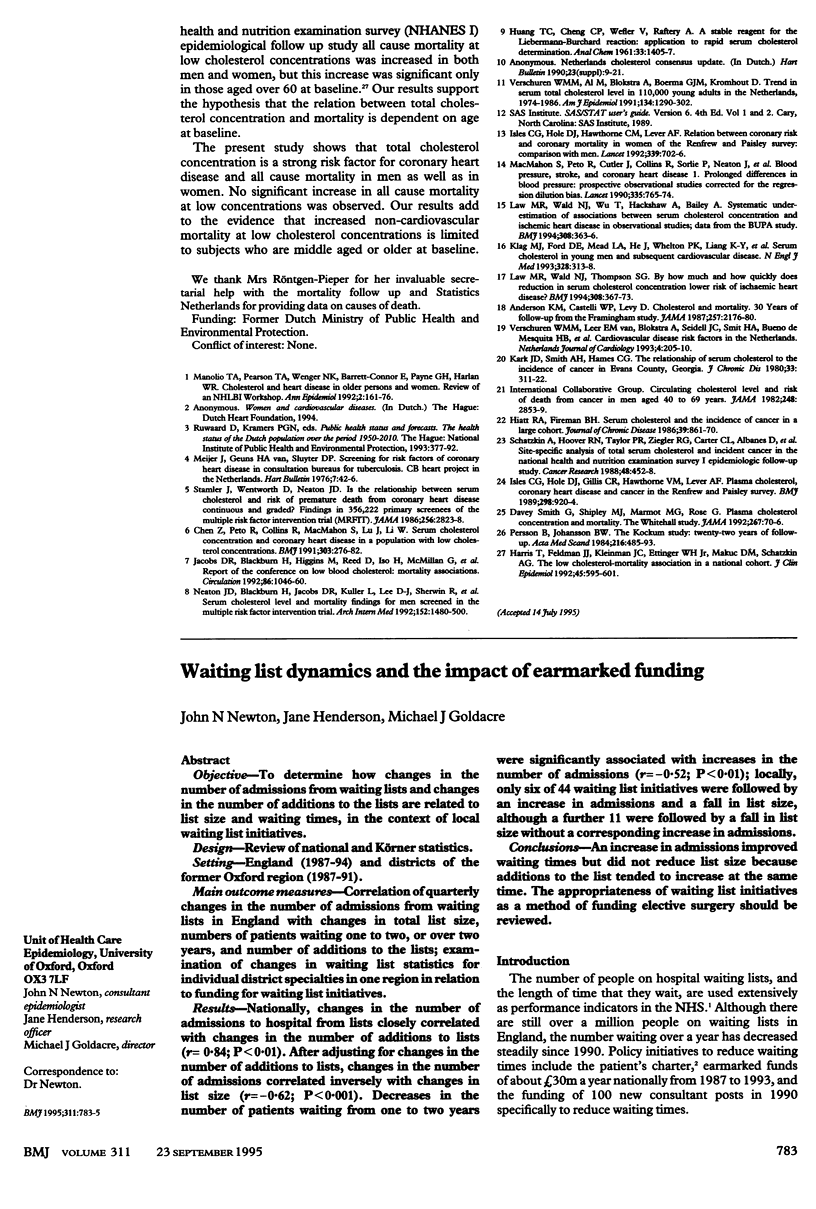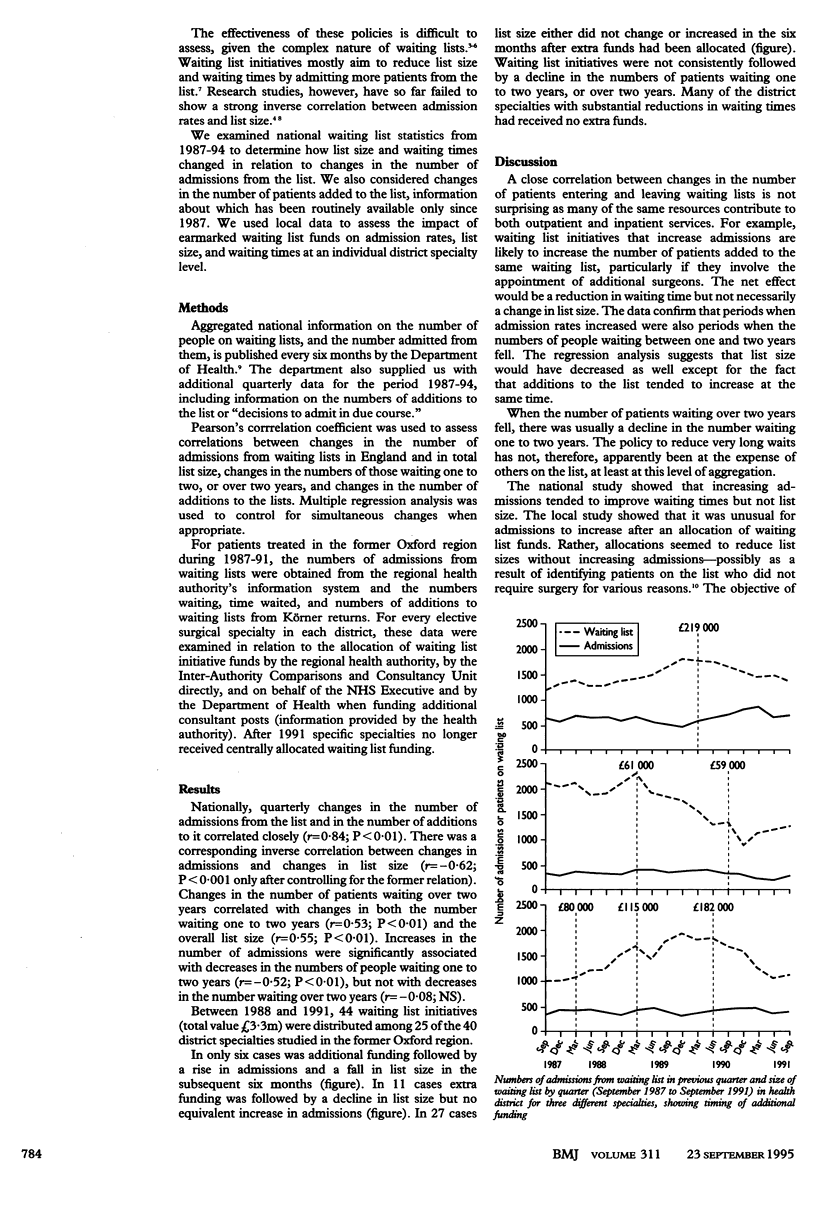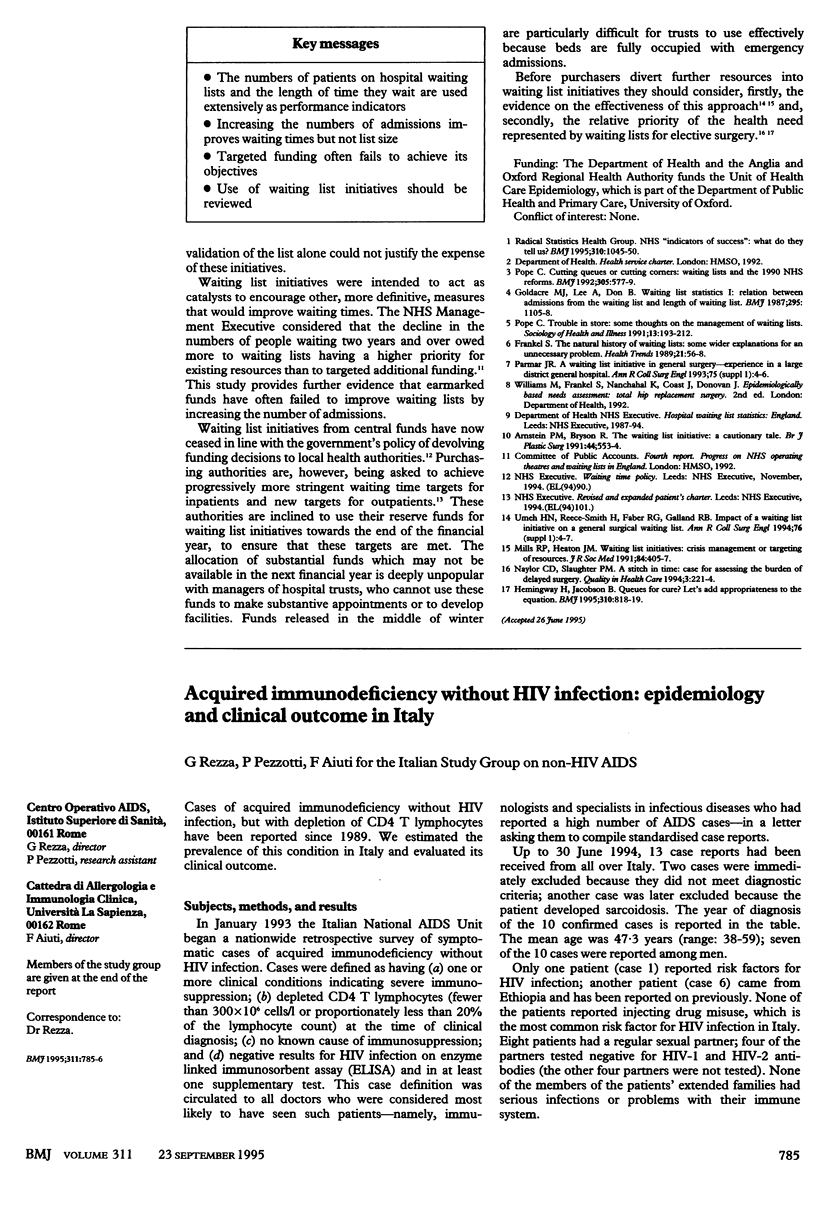Abstract
OBJECTIVE--To determine how changes in the number of admissions from waiting lists and changes in the number of additions to the lists are related to list size and waiting times, in the context of local waiting list initiatives. DESIGN--Review of national and Körner statistics. SETTING--England (1987-94) and districts of the former Oxford region (1987-91). MAIN OUTCOME MEASURES--Correlation of quarterly changes in the number of admissions from waiting lists in England with changes in total list size, numbers of patients waiting one to two, or over two years, and number of additions to the lists; examination of changes in waiting list statistics for individual district specialties in one region in relation to funding for waiting list initiatives. RESULTS--Nationally, changes in the number of admissions to hospital from lists closely correlated with changes in the number of additions to lists (r = 0.84; P < 0.01). After adjusting for changes in the number of additions to lists, changes in the number of admissions correlated inversely with changes in list size (r = -0.62; P < 0.001). Decreases in the number of patients waiting from one to two years were significantly associated with increases in the number of admissions (r = -0.52; P < 0.01); locally, only six of 44 waiting list initiatives were followed by an increase in admissions and a fall in list size, although a further 11 were followed by a fall in list size without a corresponding increase in admissions. CONCLUSIONS--An increase in admissions improved waiting times but did not reduce list size because additions to the list tended to increase at the same time. The appropriateness of waiting list initiatives as a method of funding elective surgery should be reviewed.
Full text
PDF


Selected References
These references are in PubMed. This may not be the complete list of references from this article.
- Arnstein P. M., Bryson R. The waiting list initiative--a cautionary tale. Br J Plast Surg. 1991 Oct;44(7):553–554. doi: 10.1016/0007-1226(91)90029-j. [DOI] [PubMed] [Google Scholar]
- Frankel S. The natural history of waiting lists--some wider explanations for an unnecessary problem. Health Trends. 1989 May;21(2):56–58. [PubMed] [Google Scholar]
- Goldacre M. J., Lee A., Don B. Waiting list statistics. I: Relation between admissions from waiting list and length of waiting list. Br Med J (Clin Res Ed) 1987 Oct 31;295(6606):1105–1108. doi: 10.1136/bmj.295.6606.1105. [DOI] [PMC free article] [PubMed] [Google Scholar]
- Hemingway H., Jacobson B. Queues for cure? BMJ. 1995 Apr 1;310(6983):818–819. doi: 10.1136/bmj.310.6983.818. [DOI] [PMC free article] [PubMed] [Google Scholar]
- Mills R. P., Heaton J. M. Waiting list initiatives: crisis management or targeting of resources? J R Soc Med. 1991 Jul;84(7):405–407. doi: 10.1177/014107689108400709. [DOI] [PMC free article] [PubMed] [Google Scholar]
- Naylor C. D., Slaughter P. M. A stitch in time: case for assessing the burden of delayed surgery. Qual Health Care. 1994 Dec;3(4):221–224. doi: 10.1136/qshc.3.4.221. [DOI] [PMC free article] [PubMed] [Google Scholar]
- Parmar J. R. A waiting list initiative in general surgery--experience in a large district general hospital. Ann R Coll Surg Engl. 1993 Jan;75(1 Suppl):4–6. [PubMed] [Google Scholar]
- Pope C. Cutting queues or cutting corners: waiting lists and the 1990 NHS reforms. BMJ. 1992 Sep 5;305(6853):577–579. doi: 10.1136/bmj.305.6853.577. [DOI] [PMC free article] [PubMed] [Google Scholar]
- Umeh H. N., Reece-Smith H., Faber R. G., Galland R. B. Impact of a waiting list initiative on a general surgical waiting list. Ann R Coll Surg Engl. 1994 Jan;76(1 Suppl):4–7. [PubMed] [Google Scholar]


